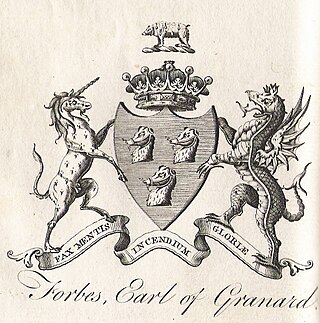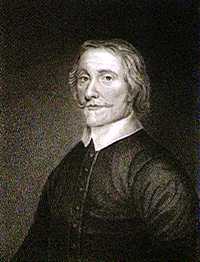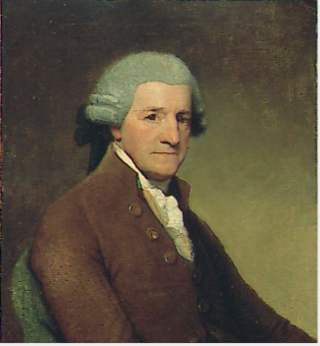
Marquess of Headfort is a title in the Peerage of Ireland. It was created in 1800 for Thomas Taylour, 2nd Earl of Bective.

Earl of Meath is a title in the Peerage of Ireland. It was created in 1627 and is held by the head of the Brabazon family.

Earl of Granard is a title in the Peerage of Ireland. It was created in 1684 for Arthur Forbes, 1st Viscount Granard. He was a lieutenant-general in the army and served as Marshal of the Army in Ireland after the Restoration and was later Lord Justice of Ireland. He had already succeeded his father as second Baronet of Castle Forbes and been created Baron Clanehugh and Viscount Granard in 1675, also in the Peerage of Ireland. The baronetcy, of Castle Forbes in county Longford, was created in the Baronetage of Nova Scotia on 29 September 1628 for his father, Arthur Forbes.

Earl of Clanwilliam is a title in the Peerage of Ireland. It was created in 1776 for John Meade, 1st Viscount Clanwilliam. The Meade family descends from Sir John Meade, who represented Dublin University and County Tipperary in the Irish House of Commons and served as Attorney-General to James, Duke of York. In 1703, he was created a Baronet, of Ballintubber in the County of Cork, in the Baronetage of Ireland. His eldest son, Pierce, the second Baronet, died unmarried at an early age and was succeeded by his younger brother Richard, the third Baronet. Richard represented Kinsale in the Irish Parliament.

Viscount Valentia is a title in the Peerage of Ireland. It has been created twice. The first creation came in 1621 for Henry Power. A year later, his kinsman Sir Francis Annesley, 1st Baronet, was given a "reversionary grant" of the viscountcy, which stated that on Power's death Annesley would be created Viscount Valentia. Annesley, a member of an influential Anglo-Irish family which descended from Newport Pagnell in the County of Buckinghamshire, was a favourite of James I, who granted him land in Ireland, notably the fort of Mountnorris in County Armagh. He was knighted in 1616, created a baronet, of Newport Pagnell in the County of Buckingham, in the Baronetage of Ireland in 1620 and Baron Mountnorris, of Mountnorris in the County of Armagh, in 1628.

Viscount Hawarden is a title in the Peerage of Ireland.

Viscount Scarsdale, of Scarsdale in Derbyshire, is a title in the Peerage of the United Kingdom. It was created in 1911 for the prominent Conservative politician and former Viceroy of India George Curzon, 1st Baron Curzon of Kedleston, who was created Earl Curzon of Kedleston at the same time and was later made Marquess Curzon of Kedleston.

Baron Monson, of Burton in the County of Lincoln, is a title in the Peerage of Great Britain. It was created in 18th century for Sir John Monson, 5th Baronet. The Monson family descends from Thomas Monson, of Carleton, Lincolnshire. He sat as Member of Parliament for Lincolnshire, Castle Rising and Cricklade. On 29 June 1611 he was created a Baronet, of Carleton in the County of Lincoln, in the Baronetage of England. His eldest son, the second Baronet, fought as a Royalist during the Civil War and also represented Lincoln in the House of Commons.

Baron Farnham, of Farnham in the County of Cavan, is a title in the Peerage of Ireland. It was created in 1756 for John Maxwell, who had previously represented Cavan Borough in the Irish House of Commons. John Maxwell's son, the second Baron, was created Viscount Farnham in 1760 and Earl of Farnham in 1763. Both titles were in the Peerage of Ireland but became extinct when he died childless in 1779. His brother and successor, the third Baron, was again created Viscount Farnham in 1781 and Earl of Farnham in 1785. These titles were also in the Peerage of Ireland. His son, the second Earl, sat in the House of Lords as an Irish representative peer from 1816 to 1823. However, he had no children and on his death in 1823 the viscountcy and earldom became extinct.
Viscount Limerick may refer to two different viscountcies in the Peerage of Ireland:

Lucas Dillon, 6th Viscount Dillon was an Irish peer who recovered title and lands after the restoration of King Charles II.

Donegan, most commonly refers to a Gaelic Irish clan from Munster. The name is diminutive of Donn which means, "the Dark One", or in modern Irish, "brown", referring to hair colour. The most prominent dynasty were an Érainn people of the Múscraige and provided a King of Munster in the 10th century in the form of Flaithbertach mac Inmainén. Much later, the family provided the Dungan Baronets and two Earls of Limerick, the most notable of which Thomas Dongan, 2nd Earl of Limerick was a Governor of New York.

Edmund Sexton Pery, 1st Viscount Pery was an Anglo-Irish politician who served as Speaker of the Irish House of Commons between 1771 and 1785.
Sir Henry Hartstonge, 3rd Baronet was an Anglo-Irish politician and landowner who sat in the Irish House of Commons as member for County Limerick. He was a close political associate of his influential brother-in-law Edmund Pery, 1st Viscount Pery. He gave his name to Hartstonge Street, Limerick.
William Cecil Pery, 1st Baron Glentworth was an 18th-century Anglican bishop in Ireland.
Edmund Henry Pery, 1st Earl of Limerick PC, styled Lord Glentworth between 1794 and 1800, and Viscount Limerick until 1803, was an Irish peer and politician.
William Henry Edmund de Vere Sheaffe Pery, 4th Earl of Limerick, DL, styled Viscount Glentworth until 1896, was an Irish peer and British Army officer.
William Dongan, 1st Earl of Limerick was an Irish Jacobite soldier and peer.

Earl of Arran is a title in the Peerage of Ireland. It is not to be confused with the title Earl of Arran in the Peerage of Scotland. The two titles refer to different places: the Aran Islands in Ireland, and the Isle of Arran in Scotland. The Irish earldom is held by the Gore family. The Scottish earldom is a separate title, held as a subsidiary title of the Duke of Hamilton.
Sir John Dongan, 2nd Baronet (1603–1650) was a member of the Irish Parliament.
















